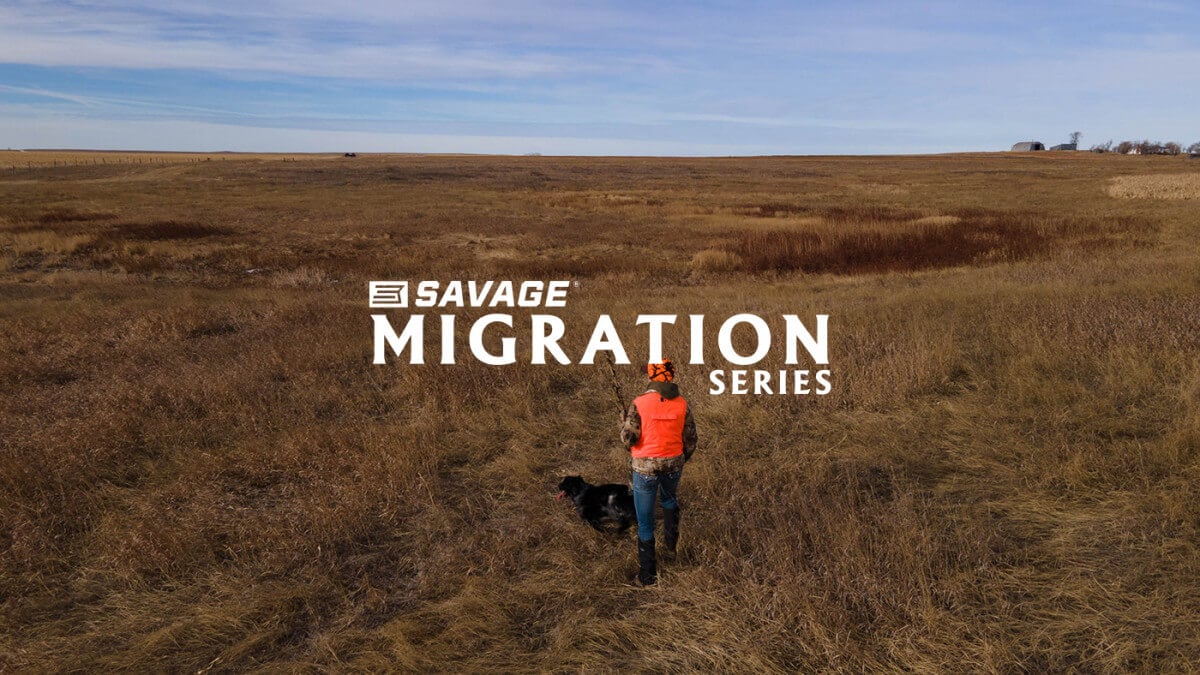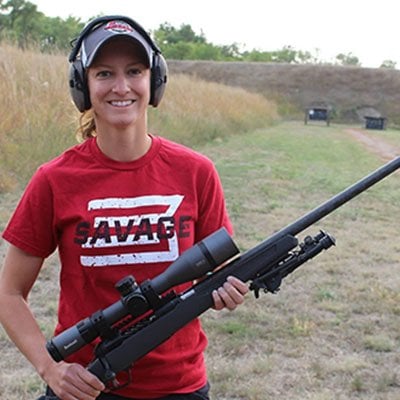- Savage Blog
- Migration Series: Missed Migration | South Dakota
Migration Series: Missed Migration | South Dakota

Growing up along the Mississippi River one would think that I at least tried waterfowl hunting prior to adulthood. I always admired people who understood weapons, hunted, and could process their own meat. I just never knew how to get started, and I was afraid that I did not know the right questions to ask. My life consisted of mostly swim practice, school, and church. Sleeping and eating found its way into my schedule too.
It was not until I moved to South Dakota in 2012 that I tried duck hunting for the first time. I was shooting a borrowed gun that did not fit well. I wish I would’ve had my Renegauge back then because it is adjustable and actually fits me. On my first hunt, I spent most of the time watching the birds fly by while the guys shot at them. I ended up shooting one Coot, and we called it a day.
Later on, my husband Ben and I went to northern South Dakota with two friends to do some duck hunting. I had never seen so many ducks in my life! I even ended up shooting my first Mallard on that trip. What I enjoyed most was the excitement from our fox red lab, Boone. He passed away last year, but he absolutely loved birds and water. Waterfowl hunting takes a lot of teamwork from start to finish. You must have good company if you get up early and stay up late with the same crew. We managed only a little sleep on our three-day hunt, but at least the snacks were good!

Over the years, I got more into goose hunting. Pierre is the capitol of South Dakota located in the geographic center of the state. It lies along the Missouri River. Just north of Pierre is the Oahe Dam, and Lake Oahe fills the space north of the dam. Many Canada Geese winter on Lake Oahe and in open water on the river. They feed on all the harvested fields surrounding the water making it an ideal place for a northern goose to thrive.
During good years, you can sit in a field or by open water to hunt the goose migration, but in Pierre we typically hunt a mixture of private and public ground from a pit or blind. Arriving early to claim your spot is always a good idea on public land, otherwise you’ll get whatever is leftover! We find most of our luck hunting out of pits and usually bag our daily limits by the end of the day.

Last year was tough, however. The migration that we normally see in December through February didn’t happen as expected. It was almost as if the geese went right around us like a summer storm breaking up. It was disappointing, but not every year is the same as the year before. In the late fall and early winter months, I sat wondering when we would see the migration and get that big flight. But the big flight never happened.
Since the goose migration didn't show up in droves like years prior, we decided to go on a pheasant hunt instead. We visited a friend’s pheasant hunting property called Dakota Limits in Midland, SD. With the Renegauge in tow, we embarked on a two-day pheasant hunt.

The weather in mid-January was cold, and the wind felt extra chilly as it hit my fingers. I brought along my upland bird dog, Winston, to help flush and retrieve our birds. We shot our limit of birds on both days, and we got to watch the dogs perform some amazing retrieves. Although our hunt ended up chasing a different species of bird, we still had a fun time and an exciting hunt.

I had the opportunity to hunt ducks in Seadrift, Texas along the Gulf with my fellow Savage Arms ambassadors, which was something I had never done before! It was great meeting other hunters from all over the country. We talked about our different methods, how we pick our gear for where we hunt, the migration in our home states, and our setups. I think that the best way to learn is to ask questions, listen and watch other hunters.
The entire experience in Texas was unlike any other hunting endeavor I’ve had. We hunted in the thick mangroves and got there by taking a long airboat ride through the salt water. The hum of the airboat was like a lullaby putting most of us right back to sleep in the morning. Hunting came early as we were up by 3:30am each morning. The best part about the early mornings at Bay Flats Lodge was that Judy makes a really good breakfast burrito to go! I am not used to eating a giant meal at 4am each morning, the burritos were right up my alley.
We took off into the dark abyss by 4:30am after we helped load up the boats. I am glad our guide knew exactly where we were going because I certainly would have led us out into the middle of the ocean. The boat swayed as we made sharp turns around piles of mangroves. Once we arrived at our spot it was time to set up for the hunt and get to our spots to await a magnificent sunrise. I had not seen any sea ducks before, so I was excited to learn about them.

We all sat in silence before the hunt started (maybe due to the lack of sleep from the night before!). As the daylight was breaking, we saw our first flight of ducks. The flight was mostly redheads with a few pintails mixed in the group. It was decent sized, maybe 20-30 ducks. I remember my excitement matched the hunting dogs, minus the shaking, as the first flight approached.
I ended up shooting a beautiful redhead that Jay, a yellow lab, returned to me. Watching a hunting dog work is fascinating. Jay bounded off the bottom of the seafloor to grab the fallen ducks. There were some retrieves that were far, but he was determined to bring us our birds. I took the redhead back to South Dakota and will have it mounted this fall. The colors of the drake are so beautiful. It reminds me of a deep copper red that was iridescent in the Texas sun.
I cannot remember how many ducks we shot the first day, but I think it was close to our limit. The second day was a bit more of a struggle, but I was having a great time hunting. I had fun and learned a lot about ducks. I picked up how to identify drakes and hens quickly when they are up close and when they are far away.
The camaraderie within the duck hunting community is unlike any other. I am used to rifle and archery hunting alone. I like to be still and listen to nature without it knowing I am there. Waterfowl hunting is different. Not only do you learn from others, but you make some hilarious jokes while sitting elbow to elbow in the blind. Listening, learning, laughing, and watching the sun rise and set together was freeing and made for a fantastic first trip to Texas.
On our way out of the lodge, we all said, “We will be back.”
Follow the Migration Series.


